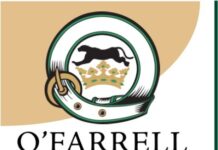by Daren Givoque, Financial Advisor,
O’Farrell Financial Services
When it comes to employer-sponsored pensions, there are two types of plans: Defined-Contribution Pension Plans and Defined-Benefit Pension Plans. Both help employees save for retirement, but what is the difference?
The Defined-Contribution Pension Plan is exactly what it sounds like. There is a defined amount of your salary that is contributed to the plan every pay period. These plans are primarily funded by the employee (called the participant), with the employer matching contributions up to a certain amount. The contributions are invested, at the participant’s discretion, in mutual funds, money market funds, annuities, or individual stocks offered by the plan. The most common type of defined-contribution plans are managed by large investment companies like Great West Life, SunLife, and Manulife through the companies’ group benefits. In this case, participants may elect to defer a portion of their gross salary via a pre-tax payroll deduction plan, with the company matching the contribution up to a set limit.
With a Defined-Contribution Plan, the employer has no obligation towards the account’s performance, and gives no guarantee as to how much it will pay out when the participant retires. These plans are easy to administer, and are low risk for the employer. The employees must choose their level of risk and select the investments themselves, based on what the group provider has to offer.
The second type of employer-sponsored pension plan, the Defined-Benefit Pension Plan, provides a specific payment amount in retirement. The amount is usually based on an employee’s salary and how long they have been employed with the company. Employees have little control over the funds, and they do not know how much they are contributing every pay period, but they know how much it is going to pay out when they retire.
Defined-benefit plans are largely controlled by the employer who takes on the responsibility of investing the funds. This means that they also take on the risk that their investments will not cover the amount they have committed to their employee once they retire. Defined-benefit plans require complex actuarial projections and insurance for the guarantees, making the cost of administration very high. This is why most companies are opting for defined contribution plans these days, where the risk is incurred by the employee.
Understanding the difference between these plans is only one piece of the puzzle. The best way to ensure you can make it in retirement is to consult a trusted financial planner who is able to guide you through the journey and give you the right advice at every step.
If you have questions, please reach out to us. See our ad in this week’s North Grenville Times and follow us on Facebook @OFarrellFinancialServicesInc.







